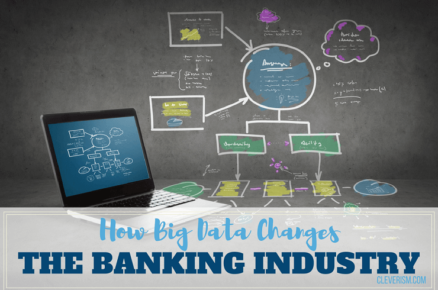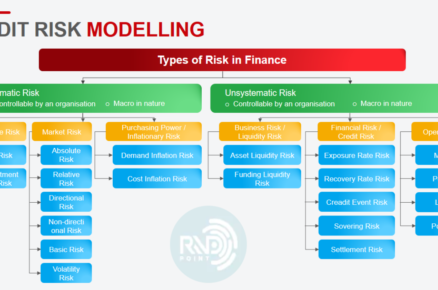Finance Dashboard
What is a CFO dashboard?
A CFO dashboard is used by a CFO (Chief Financial Officer) or Finance Director to maintain a high-level overview of their company’s financial health and overall performance. It supports them as they maintain operational oversight and plan for future eventualities.
- Forecast dashboard
This dashboard is used by the CFO to understand how individual teams (based in different states) are performing against budgeted revenue projections for the year. The total budgeted revenue for the year is $7.579 million and they have so far achieved $6.058 million. (Figures in the dashboard are displayed in multiples of 1000, which is a common practice in accounting).
In the bottom left corner, we can also see how revenue is tracking against the forecast. Forecasts are created at the start of the financial year and normally updated every quarter. By creating a realistic forecast, a business can better understand if they are ahead or behind budget in relation to where they would expect to be at that time of year.
In the middle section, the CFO is tracking the performance of individual teams in different states. They are using a dot chart system to flag any teams which are at risk of not hitting their target for the year. Two teams are high risk, and are looking unlikely to reach their target. Finally, on the right, we can see all teams’ current revenue performance as a proportion of their target revenue for the year.
-
- Focus area
Revenue vs forecast, team performance, budget risk
-
- Who looks at it?
CFO, Finance Director
-
- How often?
Several times a month
What is a revenue dashboard?
A revenue dashboard breaks down company revenue so users can see, more clearly, the different factors driving revenue changes.
MRR breakdown dashboard
This dashboard is tracking MRR (Monthly Recurring Revenue), a metric which many subscription-based businesses use to provide a normalized, high-level view of their revenue performance. On the line chart in the top left hand corner, we can see the net change to MRR – anything greater than $0 shows growth, whereas anything lower than $0 indicates a shrinkage in overall MRR that month.
Particularly in SaaS companies, there are many factors that can drive revenue change. This includes acquiring new customers, cancellations, upgrades to a higher-priced plan, downgrades to a lower-priced plan and dormant customers who have reactivated their account. Alongside the Net MRR change figure, this dashboard shows each of these metrics separately, so users are aware of the context behind changes to the primary KPI.
Focus area
MRR, revenue change
Who looks at it?
Finance Director, Company Owner
How often?
Several times a month
What is a cash flow dashboard?
A cash flow dashboard specifically monitors a company’s immediate spending power and cash. Company Owners and Finance Directors need to track cash flow separately to revenue – that’s because the timing of income and expenditure means that revenue models do not always reflect a company’s immediate cash position.
Cash flow dashboard
This dashboard tracks several metrics related to cash flow. Firstly the user is tracking total cash in the bank and how this has changed over the past month. Sometimes, companies refer to the difference in cash month-to-month as the Burn Rate, which is also being tracked in the next section of the dashboard. Related to this is the Cash Runway which shows how long the company would be able to operate at its current Burn Rate. The dashboard user has also broken down expenses by type so they can better understand what contributes to expenses.
A significant portion of the dashboard is devoted to debtors. Having debtors is not necessarily a bad thing, and is common in industries which issue invoices. However, companies need to monitor, carefully, debts that have not been paid within the agreed terms, as there is always a risk debtors will not pay. That’s why this dashboard has created a status indicator for unpaid debts longer than 45 days. If this gets too high, the Finance Director will likely need to investigate.
Finally, because the company trades internationally, they have included current exchange rates against the US Dollar.
Focus area
Cash Runway, Burn Rate, debtors
Who looks at it?
Finance Director, CEO
How often?
Every week
What is a Sales Manager dashboard?
Sales Manager dashboards are designed to give Sales Managers a complete overview of the metrics they need to be effective in their role. The content of these dashboards can vary depending on the type of company they work for, or the product or service they are selling. Generally, these dashboards reflect the fact that Sales Managers have wide ranging responsibilities, such as achieving revenue targets and managing teams.
Different examples of Sales Manager dashboard
- Sales Manager: Monthly KPI Dashboard
- Tracking Orders vs Invoices
- Sales Manager: Team Overview Dashboard
- Sales Manager: Live Monitoring Dashboard
Sales Manager: Monthly KPI Dashboard
This dashboard focuses on the Sales Manager’s progress toward their monthly revenue targets. They can quickly track performance so far, including the deals that have been closed. The dashboard also shows the total value of the immediate pipeline, including the accounts that make up the pipeline. This helps them to calibrate how likely it is they will hit their monthly targets, or if they need to take a different course of action. For added context, the dashboard also includes revenue figures from previous months, including a green status indicator showing the months where the target has been achieved.
Focus area
Monthly targets, immediate sales pipeline
Who looks at it?
Sales Manager, Sales Director, CEO, Sales Team, Finance Director
How often?
Several times a month
Tracking Orders vs Invoices
Many Sales Managers need to track metrics at multiple points of the sales process. The dashboard above is used by a company which supplies new offices and buildings with designer furniture. As a result, there is normally a 2-3 month gap between orders being placed and the actual installation of the product, at which point the invoice is issued. This means their dashboard needs to track both invoices issued and orders completed each month. The ‘total order book’ refers to orders which have been placed which have not yet been invoiced.
Focus area
Invoices issues, purchase orders placed
Who looks at it?
Sales Manager, Sales Director, CEO, Sales Team, Finance Director
How often?
Several times a month
Sales Manager: Team Overview Dashboard
This dashboard focuses on the Sales Manager’s responsibility to manage and support their direct reports. It gives a clear overview of how individuals are progressing towards their targets, meaning the Sales Manager can quickly identify issues and provide extra support when needed. In addition to overall revenue targets, this dashboard shows secondary metrics such as conversion rate and average order value. This Sales Manager has decided to create a benchmark for what they consider to be a good Average Sale Value ($4.5k), perhaps to focus the team’s attention on upselling and/or high-value customers.
Focus area
Team performance, areas for improvement
Who looks at it?
Sales Manager, Sales Team
How often?
At least once a week
Sales Manager: Live Monitoring Dashboard
This dashboard is used by a Sales Manager who manages a sales team, which is set up to process a high volume of inbound leads. In a fast-moving environment, there’s a much greater need to monitor the status of current performance and respond to issues as they arise. As a result, this dashboard focuses on important real-time metrics such as Avg. Close Time and Currently Unassigned Leads.
Focus area
Current status, daily performance
Who looks at it?
Sales Manager, Sales Team
How often?
Many times a day
What is an ecommerce dashboard?
Successful ecommerce businesses need to optimize every stage of the customer journey, from first touch to purchase. Ecommerce dashboards aggregate the most important performance metrics, so online sellers can track their progress and quickly respond to any changes.
Examples of ecommerce dashboards
Ecommerce KPI dashboard
This dashboard takes many of its metrics directly from Shopify, which the store owner uses as their primary ecommerce platform. Not only is it important for the seller to track total revenue and orders, but also health metrics such as Average Order Value, and Profit Margin.
This seller has also included a Profit & Loss statement, detailing various business costs incurred last month. These metrics are not tracked in Shopify. But by using a data dashboard, they can display these important metrics alongside the Shopify data, even though they come from different sources.
Focus area
Revenue, orders, business health
Who looks at it?
Owner, CEO, Marketing Director
How often?
Every day
Shopify and Facebook Ads dashboard
This seller’s ecommerce business has a strong focus on Facebook Ads, as the driver of new sales. This dashboard takes data from both the online store (Shopify) as well as Facebook, so the seller has a clear view of the performance of both platforms.
Focus areas
Ad performance, revenue
Who looks at it?
Owner, Social Media Manager, Marketing Director
How often?
Every day
What is an Account Manager dashboard?
Account Managers (sometimes called ‘Client Services’) are responsible for building relationships with customers, helping to solve their problems and presenting them with the full range of solutions their company has to offer. Their focus on the overall commercial value of the customer (in particular through upselling / cross selling) separates them from other customer-facing functions like Customer Support.
Account Manager dashboards are likely to focus on metrics such as: overall account value, customer engagement, upselling and retention.
Account Manager dashboard (SaaS company)
This dashboard is used by an Account Manager at a Saas company. In particular, they are responsible for successfully onboarding new customers, encouraging existing customers to upgrade their plan and also working with accounts who are at risk of cancelling their subscription (churn).
On the whole, this dashboard shows that things are going well. New accounts, upgrades, and a lack of churn is contributing to an increase in MRR (Monthly Recurring Revenue). We can also see that the onboarding process has gone smoothly this month, hitting the target for average days to fully onboard, as well as achieving a Customer Satisfaction (CSAT Score) of over 90%. (Additionally, this Account Manager has chosen to track individual accounts who have scored low, so she can get to the bottom of their poor experience.)
However, the story isn’t completely optimistic. The dashboard is highlighting a potential risk to future MRR; over 100 accounts have not engaged with the platform in over 45 days, (a sign they are likely to churn) including a number of premium accounts. The total MRR at risk from these accounts is over $15k. Fortunately, this Account Manager is now aware and able to take pre-emptive action.
Focus area
Overview of accounts, accounts at risk
Who looks at it?
Account Manager
How often?
A few times a week















